Our dentist’s office knows what we do for work. How could they not, what with the desperate phone call about a dental emergency that surfaced between our soundcheck and set time… in Glasgow. (Thank you again, Dr. Angel, for your calm and clear instructions that got me through the show.)
So it’s typical that while my mouth is stuffed with cotton, the conversation taking place above me turns to music. Recently, the dentist’s assistant started talking about how happy she was to start seeing live bands again. “Who did you see?” I managed to mumble through the cotton. “Oh Fleetwood Mac, Pink Floyd…”
I hadn’t been given any gas that day, I was hearing right. She meant tribute bands. “At a local bar?” I asked. No, she said - and started reeling off a list of the biggest venues in town where she’s been going to see these shows.
Times are hard for us and our friends in touring bands. Audiences have been unpredictable, costs are high, COVID a continuing problem. There are also a lot of bands trying to get back on the road, so competition is tight for desirable venues. The consolidation of the industry that started long before the pandemic has only increased since – there are now fewer booking agencies and fewer promoters (Live Nation and AEG dominate like never before). Which leaves many independent artists scrambling.
Still, it’s been a shock to see how many tours are leaving Boston off their schedule. (This is a big college town, remember.) Big Joanie’s upcoming US tour - their first - follows what is starting to be a too-typical east coast itinerary: Atlanta, Nashville, DC, Philly, Brooklyn… Montreal.
Here’s the spring tour for another band I’d like to see play behind their new album, Algiers. Same lacuna: Durham, DC, Philly, New York… Montreal.
One of my favorite current artists, Circuit des Yeux, managed a stop between New York and Montreal on their most recent tour – but it was in Brattleboro, Vermont.
Not that I necessarily expect my dentist’s assistant to choose one of these artists in a small Cambridge venue over a night with faux Fleetwood Mac at a glittery downtown theater. But if you’d been in my neighborhood the other day, you might have caught me standing open-mouthed as if I were still at the dentist, staring at the marquee for the Sinclair – a 500-capacity venue in Harvard Square run by AEG/Bowery Presents.
“Bruce in the USA Fri & Sat.”
A group of guys in black leather jackets were unloading equipment from a van outside. “Springsteen tribute?” I asked one. “That’s the show!” he said, cheerfully rolling an amp through the stage door.
If you missed Bruce in the USA last weekend, this coming Saturday at the Sinclair you can catch There, There (a Radiohead Tribute). And two weekends later, Crush (a Dave Matthews Tribute).
What gives?
A recent article in Philadelphia Magazine about the live music scene in New Hope PA suggested that “America has reached peak rock tribute.” This month there was even a “Fake Fest” in Fort Myers, Florida – a festival of nothing but tribute bands, with a tribute KISS, Van Halen, Bon Jovi, Guns N' Roses, Sublime, Nirvana, and Beastie Boys. “The crowd loves it… I’m giving them what they want,” concert promoter Nice Guys Productions told the Fort Myers News-Press (who made sure to point out the promoters are “not affiliated with Cape Coral’s Nice Guys Pizza”).
Tribute bands aren’t new, but I always thought of them as something for Fort Myers, or New Hope - “tertiary music markets,” as the Columbia (SC) Post and Currier explained to its readers in 2018. “It seems sometimes that you can’t swing a microphone around here without hitting a fake rock star,” they wrote then about the plethora of tribute acts playing locally. “South Carolina’s a tertiary market that doesn’t get big touring acts on their first or second leg, if they even get them at all… A tribute band is often as close as you’re going to get.”
Boston can still count on the biggest acts stopping here, even if we’re no longer getting all the cool indie bands. But you sure aren’t going to see the real Bruce in Boston for $20, like his stand-in at the Sinclair. Given our increasing economic divide, a ticket to a tribute band is as close as most are going to get to a world-famous star, regardless of location. We’re all a tertiary market now.
From the promoter’s point of view, these are clearly shows that sell themselves on the back of a national if not global brand - it’s like opening a Dunkin. You don’t have to wonder if word has gotten out enough to fill a room for Big Joanie on their first US tour, if you can announce Radiohead or Dave Matthews at the same venue instead. So why take the chance?
But I think there’s something else happening with these tribute shows aside from affordability and reliability. A 500-capacity room is, I firmly believe, a great place to see live music. All smaller rooms can be. Among the ironies of “Bruce in the USA” on the marquee at the Sinclair is that just a few doors down on the same street is the site of the real Bruce’s famous breakthrough concert on May 9, 1974, at the Harvard Square Theatre.
“Last Thursday, at the Harvard Square theatre, I saw my rock'n'roll past flash before my eyes,” wrote Jon Landau about that gig in the Real Paper, a Cambridge arts weekly. “And I saw something else: I saw rock and roll future and its name is Bruce Springsteen.”
Lots has been written about that writing about the Springsteen show in Harvard Square, because Columbia Records then used it in an ad campaign to boost the artist’s reputation. And because Jon Landau then co-produced Born to Run, and ultimately became Springsteen’s manager.
The Harvard Square Theatre held about 1,600 people – Springsteen wasn’t yet a headliner for a room that size, he was opening there for Bonnie Raitt. But it also wasn’t the first time Landau had seen Springsteen. A month earlier Springsteen had played a few nights at a long-gone, truly small club in Cambridge called Charlie’s Place. Charlie’s Place was, according to the Harvard Crimson, “A nice, quiet place to go to have a beer and a lunch platter at reasonable prices. You can sit and talk and drink and no one will bother you… By night, Charlie's transforms itself into one of the few dance bars left in the Harvard Square area - or at least one of the few worth going to. The talent varies, as talent always does, but remains on the high side of middling.”
Landau had seen and met Springsteen there, and so had photographer Barry Schneier. Schneier later described that scene at Charlie’s:
“We took our seats in one of the club’s classic high back wooden bar booths, squeezed into one side and ordered a pitcher of beer… What transpired next has made an indelible mark on me forever. The band came on, six of them squeezed into a corner of the bar in an area about 12 feet by 12 feet. With only a small empty dance floor separating the band and us, they launched into the most incredible set of jazz, R&B, and rock infused music I had ever heard.”
It was Schneier who told promoter Ira Gold to come see Springsteen play at Charlie’s Place. Gold did, and afterwards asked Springsteen if he wanted to open for Bonnie Raitt. The rest is now rock and roll past, as it were.
And here are the ticket buyers going in to see ersatz Bruce in a real room, the Sinclair – bigger than Charlie’s Place, smaller than the Harvard Square Theatre. These are all the kinds of rooms where live music thrives, for me. Is this the real experience tribute band fans are after? I suspect it is. But how will anyone learn about the real, real thing - real artists in a real room - if promoters aren’t willing to take a chance on booking the dude from Jersey singing original songs. Or Big Joanie from London.
Listening to: 500 Miles High (Live at Montreux) by Flora Purim
Cooking: Whiskey and hot water, after the show




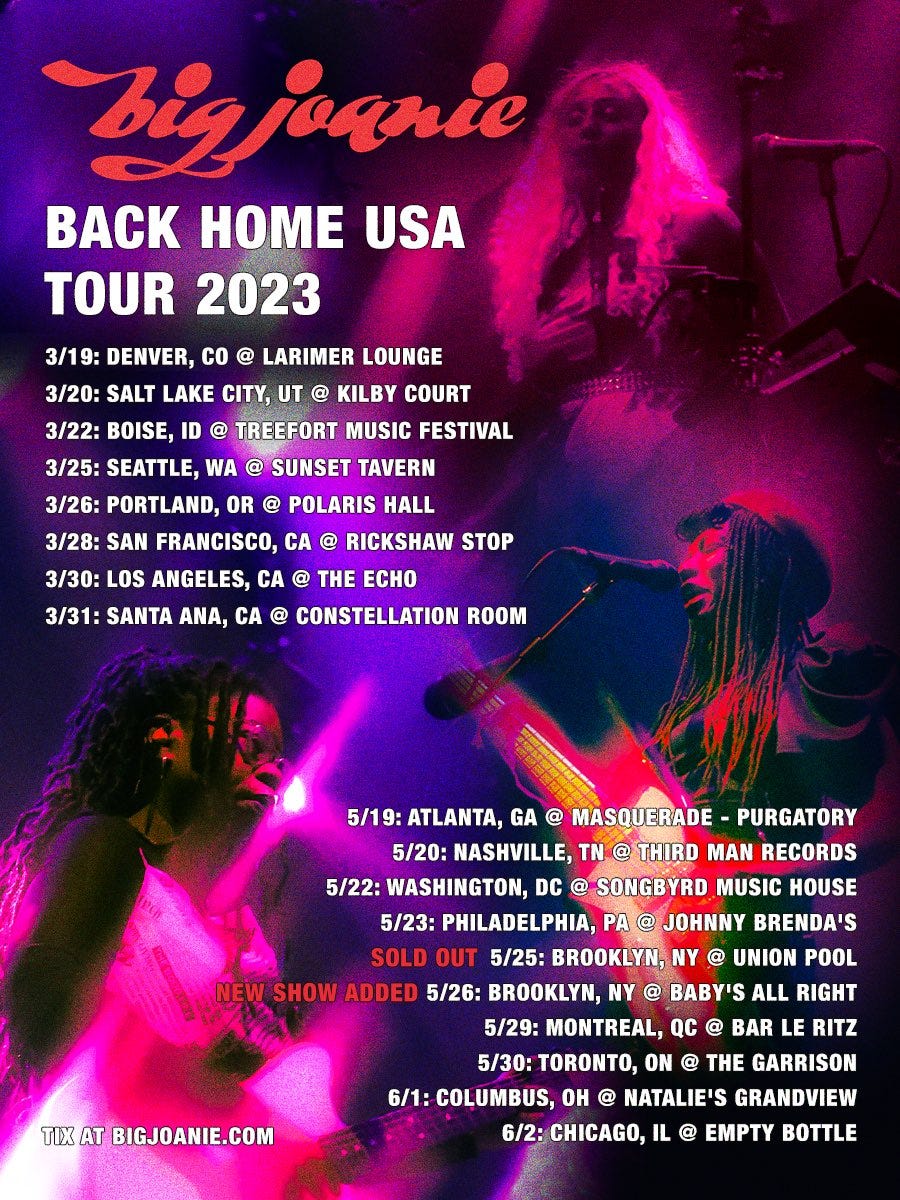
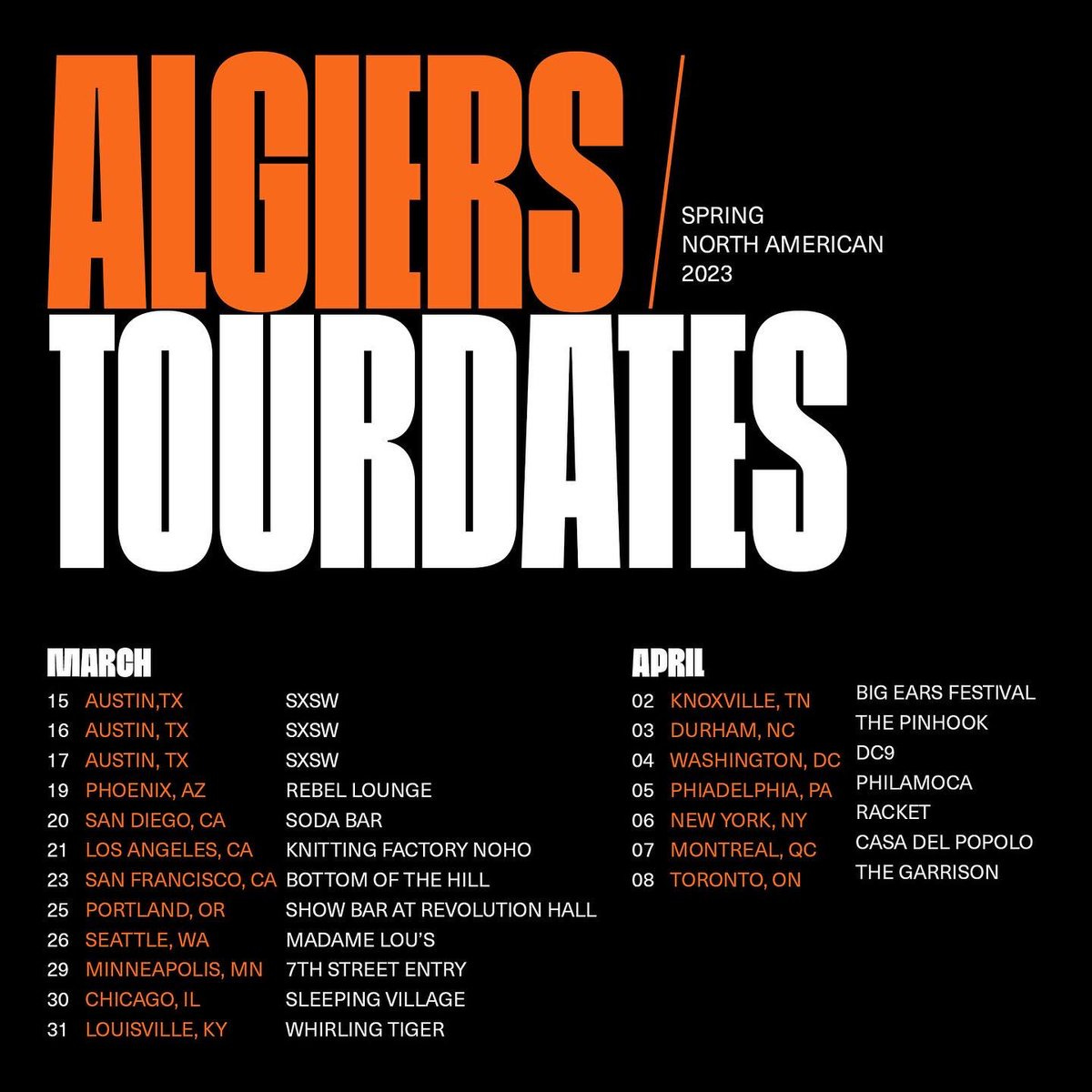

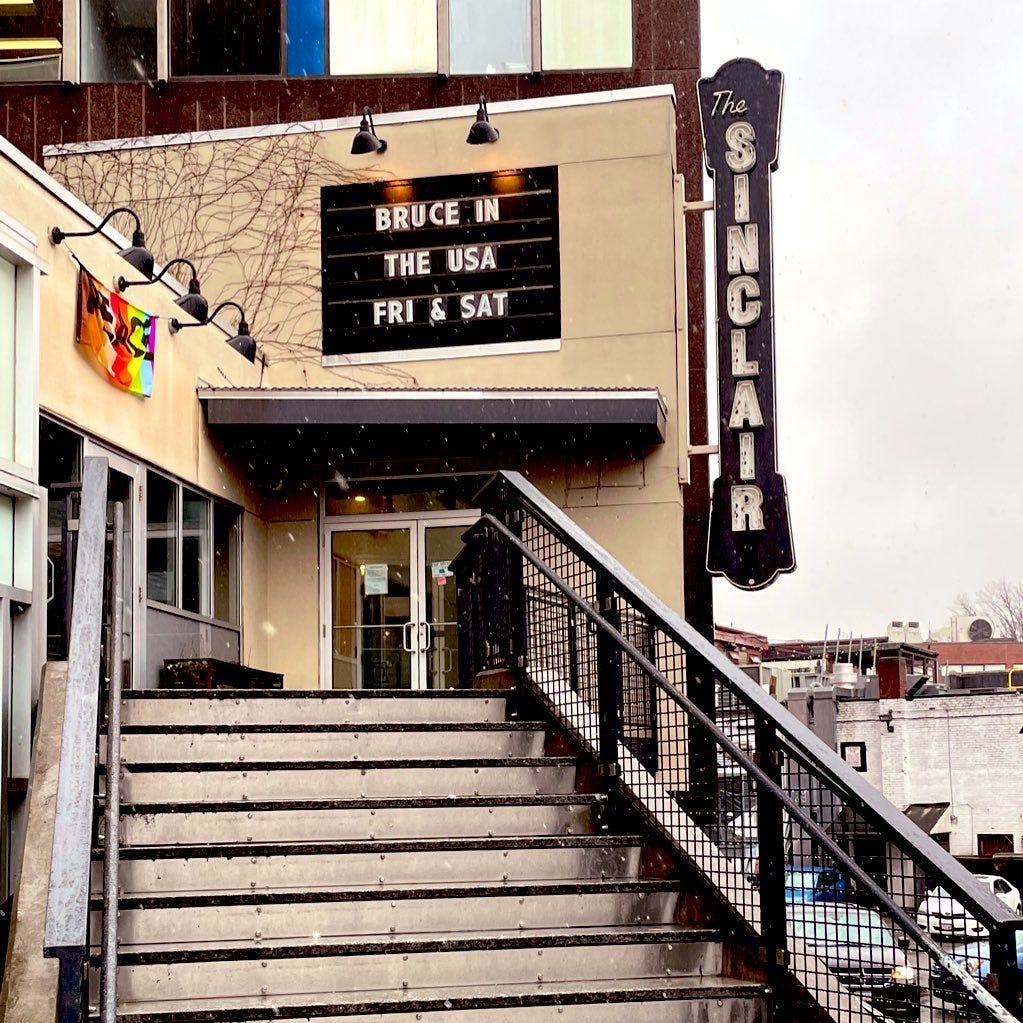
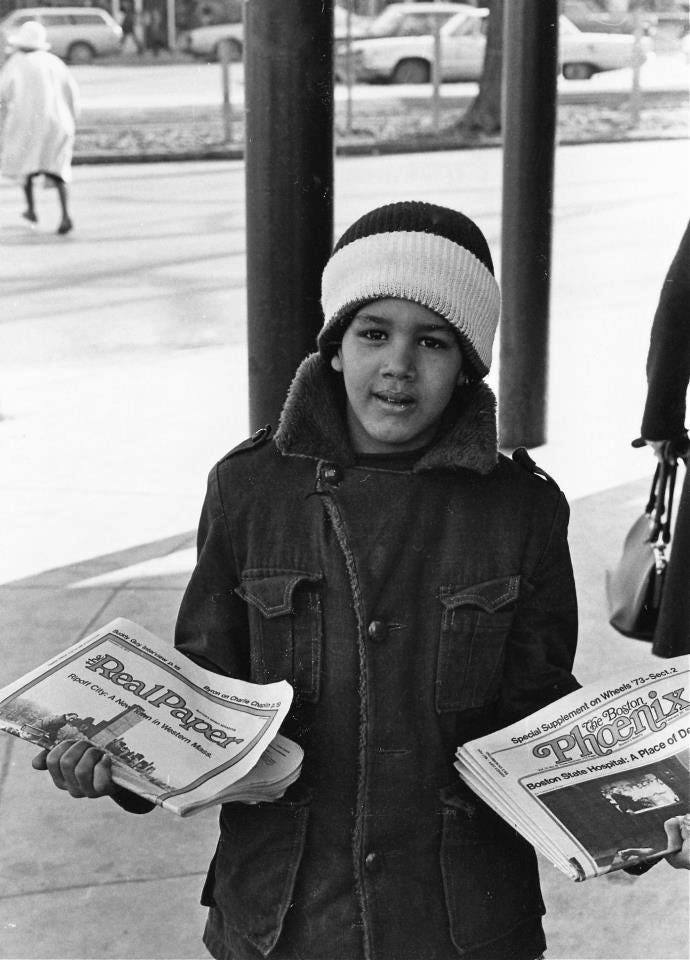
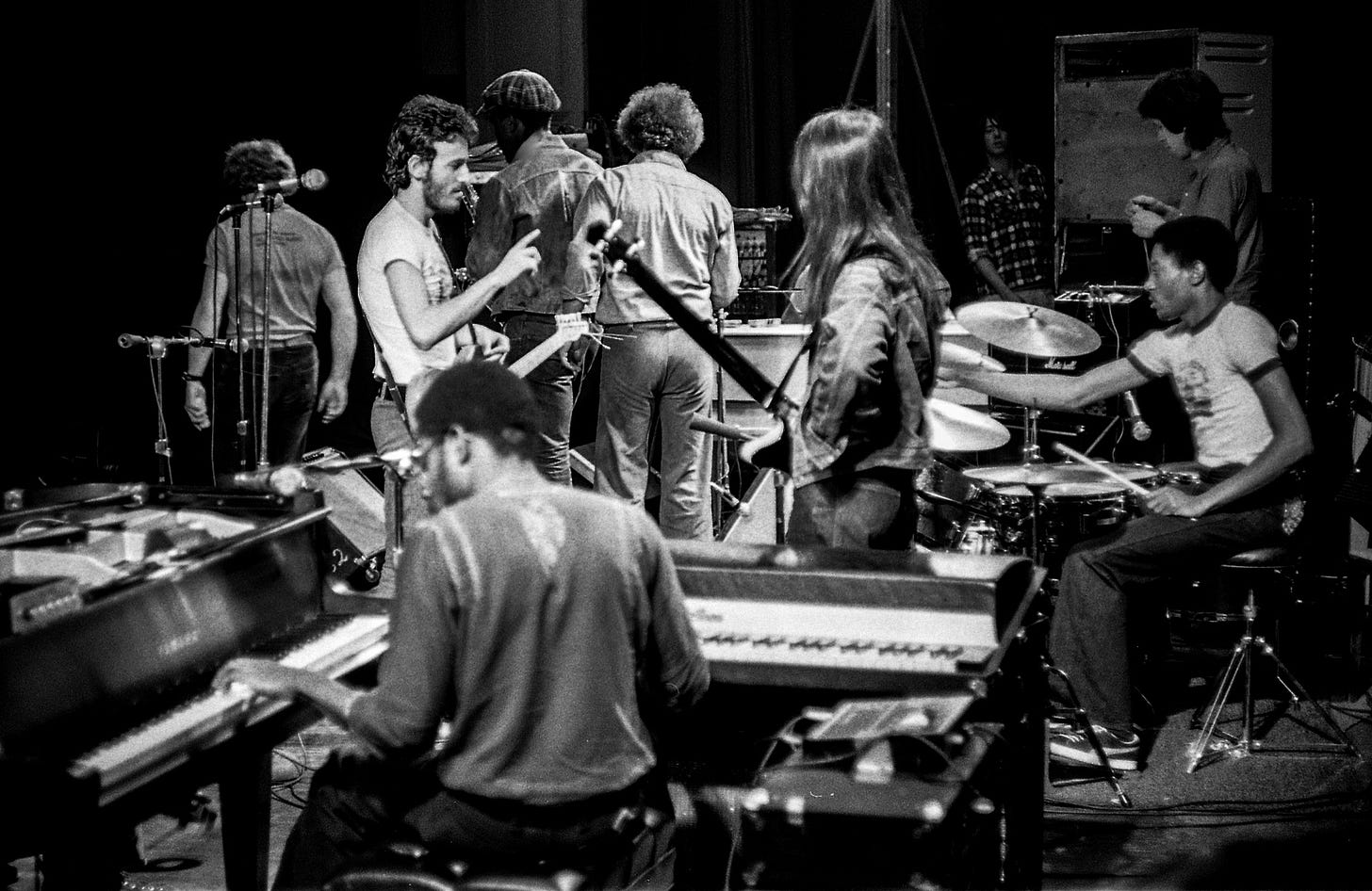
At some point last year Shawn Reynaldo of First Floor (it's paywalled so I'm not posting it) noted a similar phenomena in dance music circles, where increased volatility in ticket sales/audience attendance has led promoters and venues to book lower-risk events like tribute acts or themed dance nights--'Broadway raves', 'Shrek raves' etc.--that are more likely to draw a crowd than an original touring act general audiences are not as familiar with. (Never mind, of course, that these 'raves' take place in proper venues and, spiritually, cannot in any way be considered raves like the underground dance namesake.) I'm sure attempting to repair pandemic-damaged finances also plays a part in those booking considerations. I suppose it shouldn't be a surprise that industry consolidation of venues and an increasing fiscal conservatism of major industry players in favor of established 'old music'--I'm sure you're familiar with Ted Gioia writing about this on streaming--has led to similar effects in live music in primary and major secondary markets.
I know that many of my mid-20s peers here in Chicago, historically the sorts of people to first check out and champion up-and-coming acts, lack the money to go out to live music regularly like previous generations, which leads many of them, when they are able to go out, to avoid taking the bigger risk of potentially being disappointed at a show like Big Joanie (compared to the highs of them being phenomenal) and instead go to a tribute act or something with better prospects of being good not great. Or, you know, they only have the money to see a handful of their favorite acts like Taylor Swift or Blink-182 at phenomenally inflated prices. That might help explain things, but it doesn't make the situation that promising, vital young acts are being further excluded from breakthrough opportunities because of the risk of a bad show, from a business perspective, any more dispiriting and disappointing.
The tribute band phenomenon has been pretty surprising. When I moved to the Bay Area twenty years ago, it wasn't uncommon to see tribute bands around the fringes of the Bay Area. Now they're frequent at one of my favorite live venues in SF, The Chapel. Unfortunately, I've also seen bands that I thought were local heroes struggle to fill up The Chapel.